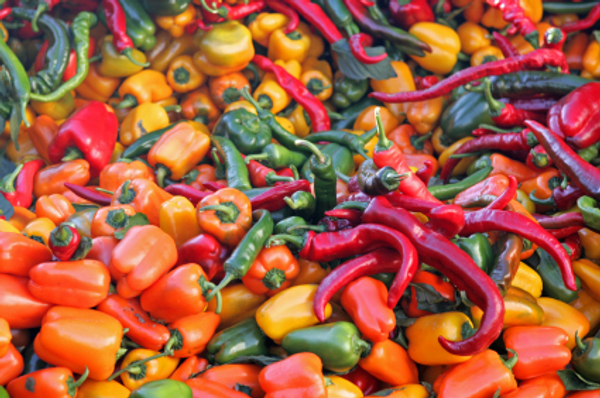---------- Forwarded message ----------
From: George Mateljan <gmf@mauigateway.com>
Date: Sun, Dec 30, 2012 at 7:11 PM
Subject: 10-Minute Peanut Bars - Healthy Food Tip and Recipe
From: George Mateljan <gmf@mauigateway.com>
Date: Sun, Dec 30, 2012 at 7:11 PM
Subject: 10-Minute Peanut Bars - Healthy Food Tip and Recipe
 | |
December 30, 2012
|
Forwarded from a friend? Sign up for your own copy of the
Weekly Newsletter and Healthy Food Tip and Recipe. |
Check Out What's New On Our Website
Book and DVD orders will not be filled between Dec 19 and Dec 27. Processing will resume on December 28th.
healthy food tip and recipe
Today's Recipe
If you don't know what to serve for dessert tonight ... In only 10 minutes you can enjoy this great energy boosting snack or dessert as part of your Healthiest Way of Eating.  Ingredients:
Printer Friendly Version of 10-Minute Peanut Bars In-Depth Nutritional Profile for 10-Minute Peanut Bars Healthy Food Tip Is soybean oil considered a healthy oil? Yes, soybean oil can be considered a healthy oil, provided that it's not been hydrogenated and provided that it's certified organic. All plant oils have different nutrient profiles, including the types of fat they contain. The plant oil that best fits into your diet depends largely on the type of fat that's missing from the rest of your diet as a whole and that's best matched to your cooking needs. Soy oil would be especially helpful for a diet that was missing the essential omega-6 fatty acid called linoleic acid. (Soy oil is about 50% linoleic acid). It would also be helpful for a diet that needed more monounsaturated fat (soy oil is approximately 25% monounsaturated). Let's compare this soy oil profile with the profiles of two other commonly chosen oils. Almost three-quarters of the total fat of olive oil are monounsaturated fat (in the form of one particular fatty acid called oleic acid). Olive oil also contains about 10% linoleic acid and a very small amount of linolenic acid, an omega-3 fatty acid. For one more comparison, consider canola oil. This oil's fatty acid profile features approximately 60% monounsaturated fats, 20% linoleic acid, and about 10% linolenic acid. In practical terms, what does all of this information tell us about which oil to select? In and of itself, it doesn't really provide us with any good answers! That's because we first have to match it with our health and cooking needs. Most U.S. adults get a sufficient amount of linoleic acid from their overall diet (we average about 13 grams per day), making this omega-6 fatty acid less likely to be needed from either soy oil or canola oil. There are some individuals, however, who would definitely benefit from increased intake of linoleic acid in their Healthiest Way of Eating. For the most part, however, it's not linoleic acid that we are missing, but linolenic acid (that key omega-3 fatty acid). From this standpoint, canola oil would be the best choice from among the three oils described above because it contains the greatest amount of linolenic acid. From a cooking standpoint, however, oils containing polyunsaturated fats (like omega-3 or omega-6 fats) are generally less stable and more susceptible to cooking damage. From the cooking standpoint, the high monounsaturated content of olive oil would make it the least likely of the three oils to be damaged by low heats. In my book, olive oil is the only plant oil that I include as one of the World's Healthiest Foods. I did not make this decision based on its fat profile, however, but rather upon its unique phytonutrient profile. Olive oil and olives contain a variety of polyphenols that have repeatedly been shown to have rich health benefits. If you've surveyed the book, you'll already know that I don't like to heat any oil due to the risk of heat damaging delicate fats. With olive oil this principle is doubly important because of this rich mix of polyphenols. The bottom line with soy oil-and with all components of your diet-is that it is important to determine what's best matched for your individual health needs and cooking plan and then insisting on the highest quality food to meet those needs. For more information on this topic, please see:
If you have any questions about today's Healthy Food Tip Ask George Your Question
What's New on the Home Page This Week
Breakthrough News
The Latest News about Turkey
George's Q&A
I'm trying to find out whether it's safe to eat cold-smoked salmon as I recently read that eating raw salmon may not be safe.  How to Order The World's Healthiest Foods, Essential Guide for the Healthiest Way of Eating. See sample pages and find out how to place an order for our new book. The special offer of free shipping is still in effect. We are already getting wonderful feedback which we want to share with you, so we're posting it on the bottom of our home page. Enjoy the book and let us know how you like it. How to Order The World's Healthiest Foods, Essential Guide for the Healthiest Way of Eating. See sample pages and find out how to place an order for our new book. The special offer of free shipping is still in effect. We are already getting wonderful feedback which we want to share with you, so we're posting it on the bottom of our home page. Enjoy the book and let us know how you like it. As a nutritionist, your book has a been a great resource for me. - AL | |
| George Mateljan Foundation, PO Box 25801, Seattle, Washington 98165 Unsubscribe | Change Subscriber Options |
-
"Be the best, do your best, expect the best"














